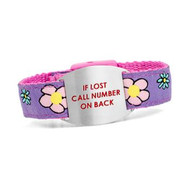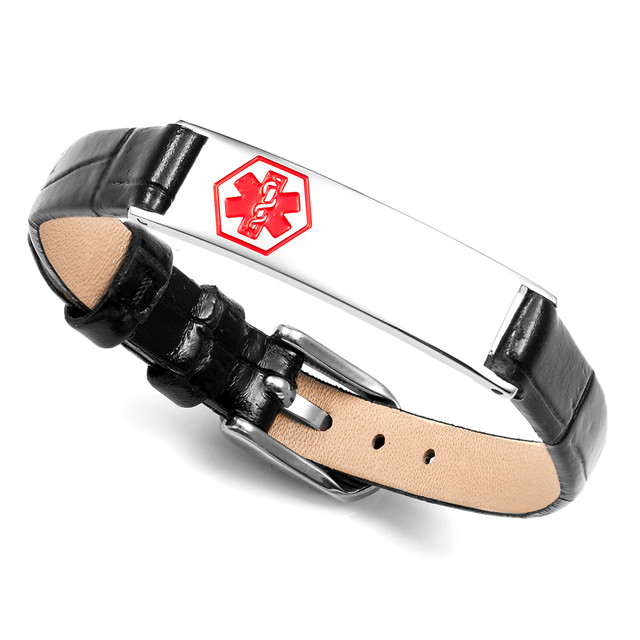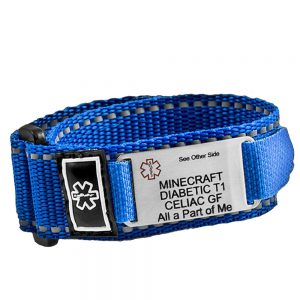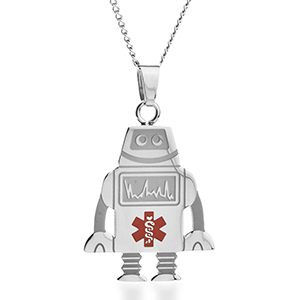ID Bracelets for Kids: Which One is Right for Your Child?
27th May 2022
There are two main types of ID bracelets for kids, standard identification bracelets, & medical alert bracelets.
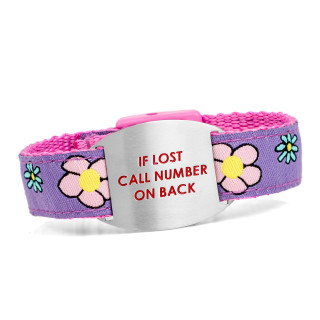 | |
| Kid’s ID Bracelet | Kid’s Medical ID Bracelet |
Who Should Wear Medical ID’s?
The purpose of a medical ID is to alert paramedics and Emergency Medical Technicians (EMT’s) to a patient’s specific medical or allergic condition at the point in time when they’re about to administer emergency treatment. It’s especially critical for children & persons whose illnesses might render them unable to speak to wear a medical id bracelet or medical alert pendant. For example, some of the conditions most commonly engraved on medical jewelry are conditions such as Diabetes, Epilepsy, and for kids, severe insect and food allergies. Additionally, anyone involved in a traumatic incident such as a car crash could be in a state of emotional distress or unconsciousness when help arrives, preventing the patient from giving their pertinent medical information to first responders. It’s commonly said that a medical ID speaks for you when you’re unable to speak.
Kids who have medical conditions should definitely wear medical identification. No matter how involved you are in your kid’s life, there could be a time when you can’t speak up for your child. Whether it’s at school, child care, a friend’s house, a birthday party, or some other event, there might be a circumstance in which your child’s medical information needs to be known right away. A medical ID can do just that, and help your child receive the correct treatment, faster.
Identification Bracelets
Standard children’s ID bracelets are typically engraved with a parent’s phone number, and other important contact information e.g. another family member’s name and phone number. Children’s ID bracelets can be invaluable at large venues, such as a theme park or stadium. Our "If Lost" id bracelets for kids are perfect for keeping little ones safe if separation occurs.
Medical Alert Bracelets
Medical alert bracelets for children are typically worn by kids with ongoing medical conditions, in order to provide EMT’s (Emergency Medical Technicians) with details about their medical condition in the event of an emergency. Anyone with a medical condition such as diabetes, epilepsy, or autism should consider wearing a medical ID bracelet. It’s also important to wear a medical ID if a person has an allergy to certain medication, or if that person is currently taking medication. It’s also a good idea for children to wear a medical ID if they are allergic to specific foods or things like bee stings, insect bites, or grass. Even if the child care service your using has your child’s allergies and/or medications on file, having that information on the child and visible is very helpful to the activities coordinators taking care of your child.
Choosing an ID Bracelet Style that’s Right for Your Kid
Bracelets can sometimes be annoying and cause irritation to kids if they’re required to wear them daily. So, whether you’re looking to purchase a standard id bracelet for your child, or a medical id bracelet, there are a few options that you should know about.
Leather ID Bracelets
Leather bracelets are a great choice for comfort. If your kid doesn’t like to wear the traditional metal-link style id bracelet, you might want to consider purchasing a leather id bracelet instead. Leather ID bracelets also look great. It’s been said that leather is always in style, and leather ID bracelets are no exception. We’ve found that a growing number of kids and teens prefer leather bracelets to traditional metal id bracelets. The downside of leather id bracelets is that they are not meant to be worn in water, and will (in most cases) wear quickly if frequently worn in water.
Sports Strap Bracelets
Another great choice for comfort is the sports strap bracelet. The woven nylon straps are adjustable, and they are generally more comfortable to wear than metal bracelets. Unlike leather bracelets, the sport strap bracelets are water safe, and they can even be washed if they get dirty. The sports strap id bracelets are interchangeable with the several different plaques and come in 21 fun strap designs and colors so you don’t have to worry if your child doesn’t want to wear the same thing every day.
How to Correctly Size an ID Bracelet for Your Child
Children’s wrist sizes vary greatly, so it’s very important that you measure your child’s wrist before purchasing a bracelet, instead of trying to guess the size. Generally speaking, it’s recommended that you purchase a bracelet 1/2″ to 3/4″ larger than your child’s actual wrist size. However, certain bracelet styles might have alternative sizing recommendations because of their unique shape, so it’s important to read the available information of the bracelet you’re going to purchase. Any unique sizing specifications will typically be described on the individual product page, either in the item description or product details sections. Of course, the best option for kids is an id bracelet that has an adjustable strap. Kid’s are always growing, and purchasing an adjustable strap can save you from frequently having to spend money on new bracelets. It’s also a good idea to take the child’s age into account when shopping for a medical alert bracelet; some parents choose bracelets that have a snap-lock clasp instead of a traditional lobster clasp so that their young children cannot easily remove the bracelet. Also, bracelets with plastic snap-lock clasps tend to withstand abuse better than the small metal rings that traditional bracelets use to connect clasps.
Alternatives to ID Bracelets
Whether your child hates wearing bracelets, frequently breaks them or takes them off, or if bracelets simply feel uncomfortable to your child, sometimes ID bracelets just don’t work out. Medical ID pendants are a new alternative that seems to be popular with a lot of people, young and old. Wearing a dog tag or a necklace is a reasonable alternative that can provide relief from having to wear a bracelet every day.
What Do EMT’s Look For On A Patient?
Emergency Medical Technicians (or EMT’s) are trained as first responders, to look first for a medical ID bracelet and other forms of medical identification (such as a medical alert necklace or pendant), and then for medical wallet cards. Because of the urgent nature of emergency situations, it’s important to have your medical information quickly and easily available to the medical personnel via one of the aforementioned forms of medical identification. If the medical personnel is unable to quickly locate your medical alert information they will begin treating you without any prior knowledge of your condition and/or allergies.
What Should You Have Engraved On Your Child’s Medical ID?
We’ve spoken with some of the Medical Technician’s in this area and here’s what we’ve found. The most important information to engrave on a medical ID is as follows:
1) The most important thing to engrave on your medical ID is your diagnosis or condition. That is the main condition that affects your health.
2) The second most important thing to include in your medical alert jewelry is your allergies. In addition to your allergies to everyday things, it is also important to include any medications that you are allergic too.
3) Third, if there is room left on your medical id it is good practice to include your name and emergency contact information. For children, it’s a good idea to have at least one parent’s contact information included in the id. Note: name and emergency contact as well as any other personal information is optional and typically engraved on the back side of your medical id bracelet or pendant to keep personal


